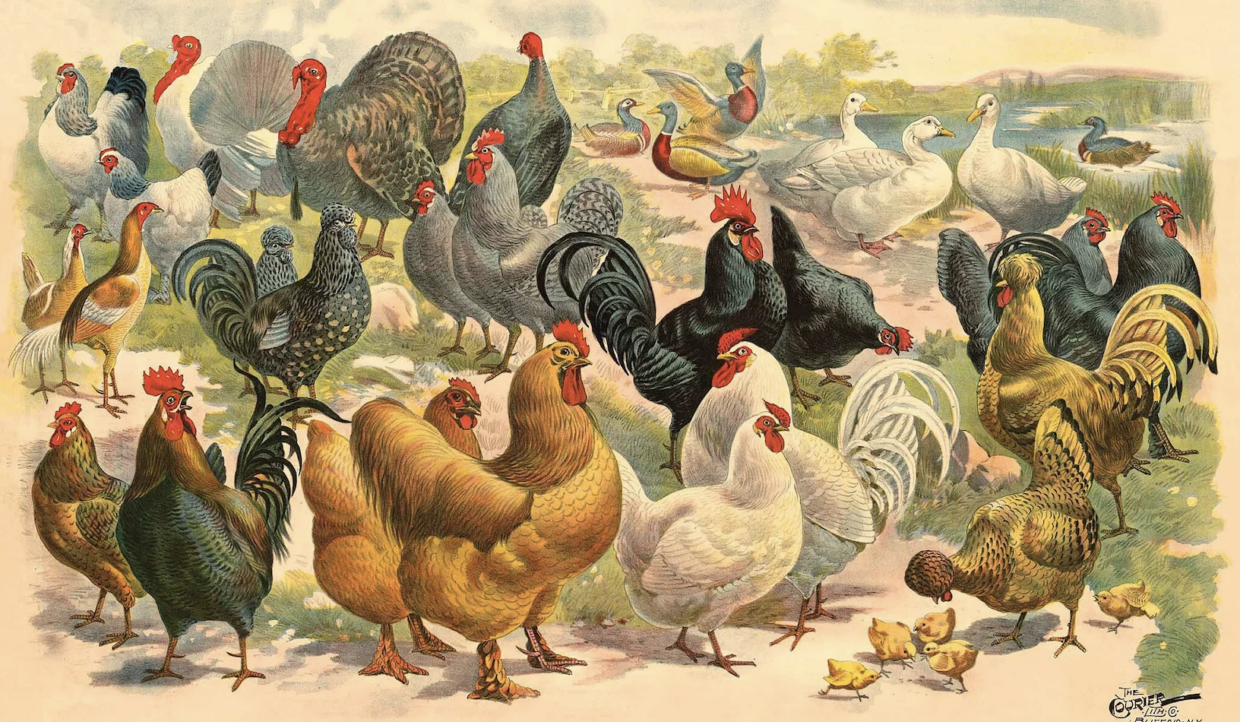Chickens with poufy topknots; chickens with feathered feet; chickens with turquoise earlobes; chickens who lay green eggs (though not with ham); chickens with tails that can grow twenty feet long...
.When I placed my initial (by some reckoning, as long as eight thousand years—longer than donkeys and horses, longer than camels or ducks, and by some accounts, even longer than pigs and cattle). Starting with the red jungle fowl of Southeast Asia (who looks pretty much like the rooster on the Kellogg’s Corn Flakes box), through selective breeding people have created as many as three hundred and fifty different varieties of chickens—chickens spangled with iridescent feathers, chickens naked necks (these are called turkens but are really chickens, not crosses with turkeys), chickens standing tall on bantams who might weigh only a pound.
Every winter we muse over the catalogs of the chicken hatcheries the way gardeners dream over seed catalogs. We glance at the bargains: one catalog carries a Top Hat Mottled Houdans to the golden Buff Laced Polish, all of of feathers. Even the babies sport little top hats.
There’s cial, a selection of chickens whose feathers can be used to fashion particularly attractive fishing lures. Of course, we ian and certainly wouldn’t eat anybody I know. What we’re really looking for are handsome, vigorous feathers, red, upright combs, and ample bodies, our Black the Nuns,” especially when they raced out of their coop in their billowy black habi.


















